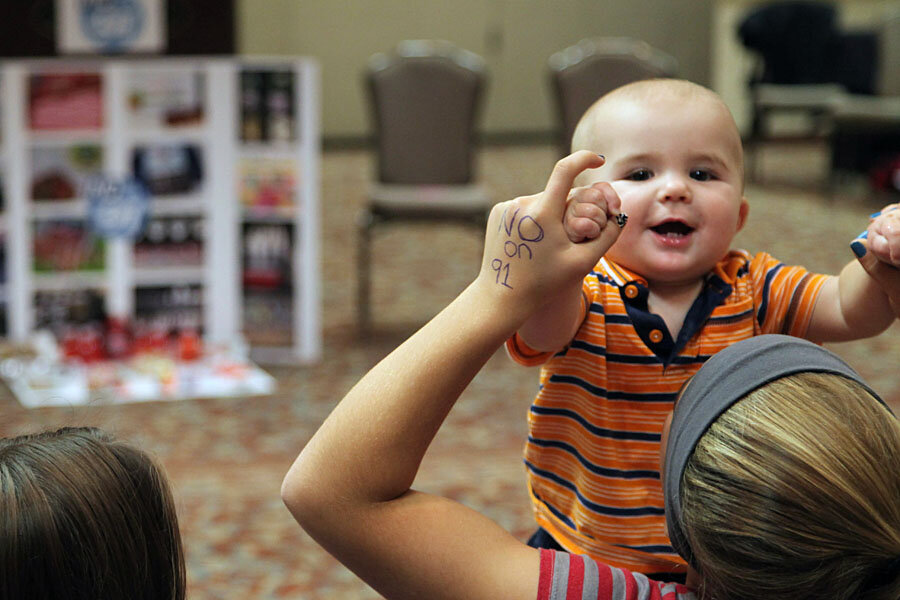Raising a child doesn't have to break the bank
Loading...
Raising a child born in 2013 to the age of 18 will cost a middle-income couple more than $245,000. That’s up $4,260, or almost 2%, from the year before, according to a recent U.S. Department of Agriculture report. And that doesn’t include post-secondary education expenses.
Thankfully, my daughter is 16, so the bulk of her financial support is behind me.
Or is it?
There is college in her future — a small fortune. If you examine household formation in the United States, it appears she may remain under my roof after her studies are completed. If the current trend continues where one in five individuals in their 20s is living with his or her parents, I’m thinking the odds are greater for her to be underemployed or unemployed for years after graduation.
I’m not a pessimist, just facing the reality of the world after the Great Recession. The financial crisis exacerbated this shift; however, kids have been steadily returning to the roost after college for years.
It doesn’t matter; I have no regrets. My child has been an extraordinary investment. If she needs to return home to gain financial footing before she goes out on her own, I’m fine with it. Actually, I’m in favor of it.
But talk about sticker shock; a dear friend of mine, a demographer, calls it “zipper freeze.” Since 2008, I’ve encountered a change in how couples perceive children. They’re waiting until they are on sound financial footing first, having fewer children or none at all.
The USDA study, prevalent in the media, is often cited as strong evidence for “zipper freeze.”
How do you manage to experience one of the greatest joys without breaking the bank? Step back and do your homework. It may not be as bad as you think.
Consider the imaginary child first: Examine your budget as if you have a newborn and see how your finances handle it. Go to www.babycenter.com and use the cost of raising a child calculator. You can adjust for a child’s age, 0 to 2, 4 to 5 and so on. Then investigate your household cash flow to determine how the increased costs can be met. A young couple decided to cut their retirement savings by 2% annually. Having a child was a responsible choice, and they fully understood the pros and cons to the family budget.
Bolster your cash reserves: Decide on how childcare expenses will affect your overall financial situation. Go to www.parents.com and run the stay-at-home calculator. You may be surprised to discover that one parent staying at home may not make a great financial impact. Bolster your emergency reserve as much as you can beforehand to reduce the financial burden of childcare expenses. Some people are moving closer to home and paying grandparents, great-grandparents and other family members to watch the kids. Is this an option for you? That’s been an option for two out of every six couples I counsel.
Take advantage of all the tax credits available: Credits are a dollar-for-dollar reduction of taxes that are more powerful than itemized deductions. Don’t forget the child tax and dependent care credits. I see more couples with children who miss valuable tax credits. Ask your tax advisor if you qualify.
Don’t forget your workplace benefits: Yes, your employer may offer relief. You may have overlooked childcare subsidies and other benefits an employer provides because they weren’t important to you. Contact your human resources department and find out. Many couples have been pleasantly surprised to discover benefits are available through childcare or a dependent care flex plan, which in some cases is a better financial decision than the dependent care tax credit. Have a financial planner crunch the numbers to help you decide.
Don’t be too disheartened by the USDA study: It makes assumptions that may not fit your personal financial picture. For example, the study assumes your children will attend private school. If not, reduce the total by roughly 20%. In addition, the estimated cost of annual child care used is greater than the services I investigated in several areas of the country. I understand planning for maximum childhood expenditures; however, don’t let the analysis prevent you from having children. Use it to begin your research, and consult professional resources to plan accurately.
Obviously, every situation is different. Formulating a three-year plan to save and investigate childcare and education options can result less stress, fright and sticker shock.
Then you can focus better on the fun stuff — like diaper changing.
Learn more about Richard on NerdWallet’s Ask an Advisor
The post Children May Not Be as Costly as You Think appeared first on NerdWallet News.







